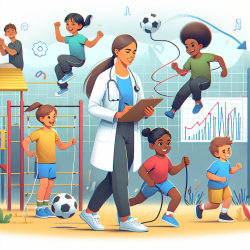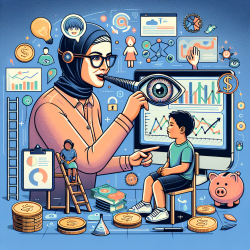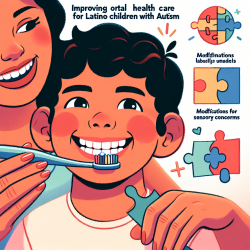Introduction
In the field of speech-language pathology, creating optimal outcomes for children often involves a multifaceted approach. A recent study titled "Physical activity level in Korean adults: the Korea National Health and Nutrition Examination Survey 2017" sheds light on the importance of physical activity (PA) and its broader implications. While the study primarily focuses on adults, its findings offer valuable insights that can be adapted to improve speech therapy outcomes for children.
Key Findings from the Study
The study revealed several key points:
- 66% of Korean adults did not meet any PA guidelines.
- Socioeconomic factors such as sex, age, marital status, income, and education level significantly influenced PA levels.
- Medical and fitness variables like chronic disease prevalence, body mass index (BMI), and hand-grip strength were associated with PA participation.
- Lifestyle and psychological factors, including stress, depression, and quality of life, also played a crucial role.
Implementing These Findings in Speech Therapy for Children
While the study focuses on adults, the implications for children are profound. Here’s how speech-language pathologists can leverage these findings:
1. Encourage Physical Activity
Encouraging physical activity in children can have a positive impact on their overall well-being, which in turn can enhance their ability to engage in speech therapy. Activities such as aerobic exercises, resistance training, and play can be integrated into therapy sessions to make them more engaging and effective.
2. Address Socioeconomic Barriers
Understanding the socioeconomic factors that affect PA can help practitioners tailor their approaches. For instance, providing resources and support to families with lower income or education levels can help ensure that children from these backgrounds receive adequate opportunities for physical activity and speech therapy.
3. Monitor Health and Fitness Variables
Regularly monitoring health and fitness variables such as BMI, hand-grip strength, and overall physical health can provide valuable insights into a child’s readiness and ability to participate in therapy. This data-driven approach can help customize therapy plans to meet each child's unique needs.
4. Address Psychological Factors
Psychological factors like stress and depression can significantly impact a child’s progress in speech therapy. Integrating strategies to address these issues, such as mindfulness exercises or counseling, can improve therapy outcomes.
Encouraging Further Research
The findings from this study underscore the importance of a holistic approach to speech therapy. Practitioners are encouraged to delve deeper into the relationship between physical activity and speech development in children. Further research in this area can provide more concrete evidence and strategies to enhance therapy outcomes.
Conclusion
Incorporating physical activity into speech therapy sessions can yield significant benefits. By understanding and addressing the various factors that influence physical activity, practitioners can create more effective and engaging therapy plans for children. For those interested in exploring the original research paper, please follow this link: Physical activity level in Korean adults: the Korea National Health and Nutrition Examination Survey 2017.










